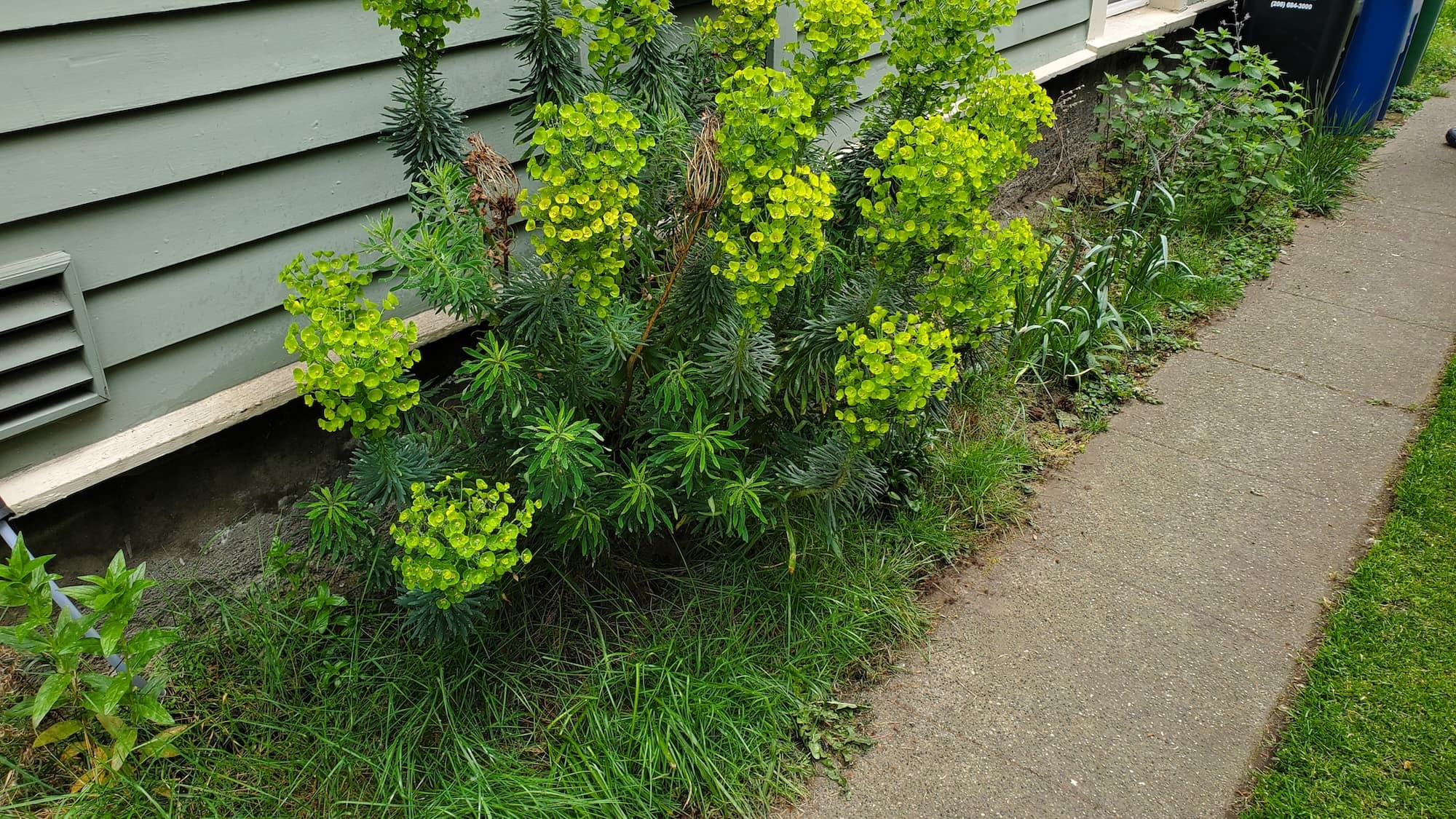West Seattle Clear weeds around power poles
Homeowner’s Issue
Power poles sit at the edge of yards, sidewalks, and right-of-ways in West Seattle neighborhoods from the Junction down toward Alki and along Fauntleroy. The area’s heavy fall–winter rainfall, occasional summer drought, and compacted glacial till topsoils create perfect conditions for fast re-establishment of weeds and moss. North-facing corners and properties under big maples or firs get persistent moss and ivy; south-facing strips dry out and favor tough taproot weeds. Himalayan blackberry and English ivy are common in older lots and can climb into utility clear zones quickly after one wet season.
Drainage at the base of poles often pools or becomes compacted from foot traffic, making mechanical removal tricky and increasing regrowth if the soil isn’t improved. Visibility and access for maintenance are practical concerns—utility crews need clear paths, and neighbors expect a tidy curb. Homeowners also face HOA guidelines or city right-of-way rules that want vegetation controlled but prohibit chemical controls. In short: you want durable, low-to-no-chemical solutions that handle root systems, improve suppression, and respect Seattle City Light access needs without turning the job into a recurring weekend chore.
Our Quality Service
We remove weeds and invasive groundcover safely and sustainably, focusing on root extraction and long-term suppression. Typical tasks use hand tools (weed wrench, hori-hori, scraping tools), low-emission battery trimmers for tidy edges, and steam or hot-water treatment where appropriate to kill seedlings without herbicides. For stubborn patches we solarize or install a mulch barrier and amend topsoil lightly to reduce compaction.
Timelines: a simple pole clear is often 30–90 minutes; multi-pole or overgrown sites can take a half- to full-day. We schedule work to avoid wet-weather compaction and to follow Seattle’s seasonal watering norms when adding new groundcover or mulch. You’ll get a clear start/end time and an honest estimate; we don’t over-promise regrowth control without follow-up.
Benefits: safer pedestrian access, cleaner curb appeal for listings or HOA standards, reduced ongoing maintenance, and fewer repeated weekend tasks for you. All methods are organic and sustainable—no chemical herbicides.
What’s Included
- Site assessment and scope of work.
- Hand-pulling and root extraction of weeds and invasive runners.
- Light soil decompaction and removal of debris.
- Edging and trimming around the pole and adjacent sidewalk.
- Optional mulch application (specify type and depth).
- Green-waste haul-away or direct placement in your green bin (your choice).
Options / Upgrades
- Mulch + landscape fabric under gravel (for high-traffic bases).
- Steam/hot-water spot treatment for seedlings and turf edges.
- Organic vinegar-based spot control used only where appropriate.
- Low-growing native groundcover planting to suppress regrowth.
- Gravel bed with geotextile for extremely high-traffic or drainage-prone sites.
- Full haul-away vs. leaving materials in green bin for city pickup.
Before & After / Expectations
Expect a bit of noise from hand tools and battery trimmers and a short window of visible disturbance where roots were removed. Heavier jobs will create more organic debris; we bag and haul or leave in your green bin per your preference. It’s normal to see residual seedlings for a few weeks after treatment—those are handled on a 4–8 week follow-up if you choose scheduled maintenance.
Care tips for West Seattle
- Mulch helps through the wet season but reapply in late fall for winter suppression.
- Avoid planting thirsty species next to poles; choose dry-tolerant natives if planting.
- Watch for blackberry shoots in late summer and remove before they fruit.
- Moss thrives in shady damp corners—improve drainage and thin overstory if moss control is a priority.
- Water new plantings early morning and only as much as needed; Seattle summers may require targeted deep watering.
FAQs
Do you use herbicides?
No. We use hand tools, steam/hot-water, mulches, fabric, solarization, and organic spot treatments only.Will you contact the utility company if work is needed close to equipment?
We do not perform work on utility equipment. We clear vegetation around poles but will advise and coordinate with Seattle City Light if access or work on the pole itself is required.How often will weeds come back?
Expect some regrowth—most clients benefit from one follow-up in 4–8 weeks and seasonal tune-ups. Heavy-infestation sites may need a couple of visits the first year.Do you haul away debris?
Yes. Choose full haul-away or use your green-waste bin for city pickup; we’ll include options in the estimate.When is best to schedule?
Late spring through early summer for best root removal results; avoid heavy-soil compaction on wet winter days.
Call to Action
If you’re in West Seattle and want a tidy, low-maintenance zone around your power poles—whether near Alki, Admiral, or Lincoln Park—book a quick estimate. We offer fast scheduling, honest local expertise, and sustainable methods that keep your curb neat without chemicals.
Email: neatandtidyseattle@gmail.com
Phone: 206-538-9344
Mon–Sun: 9am–6pm
Licensed • Bonded • Insured










